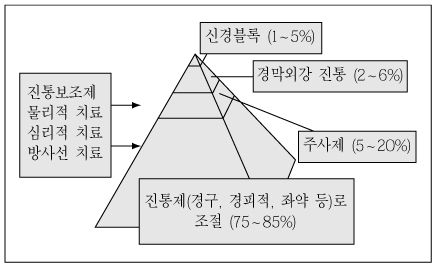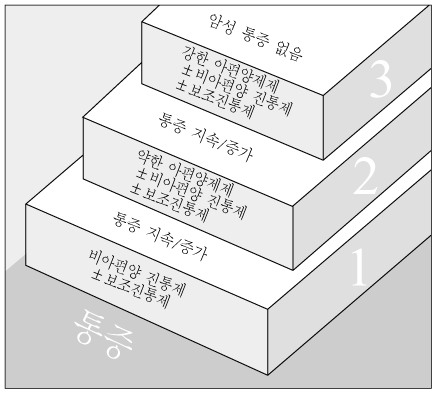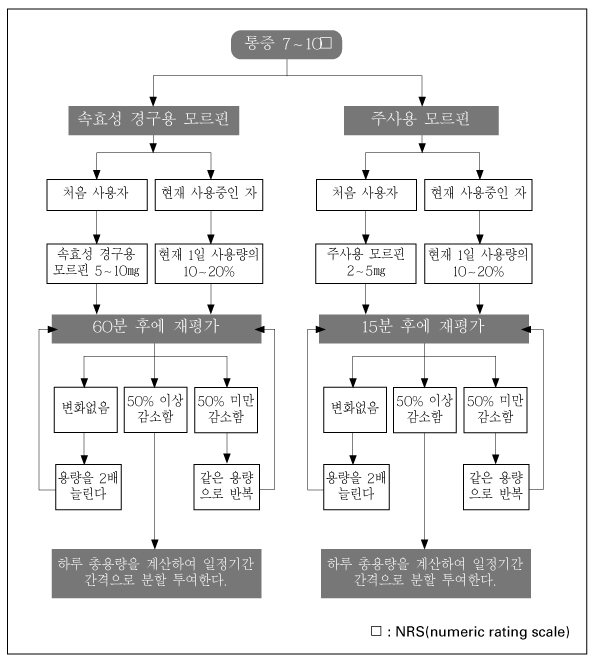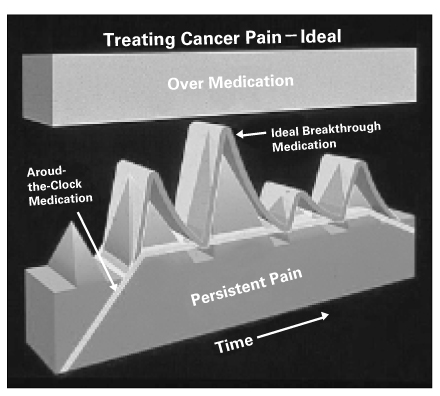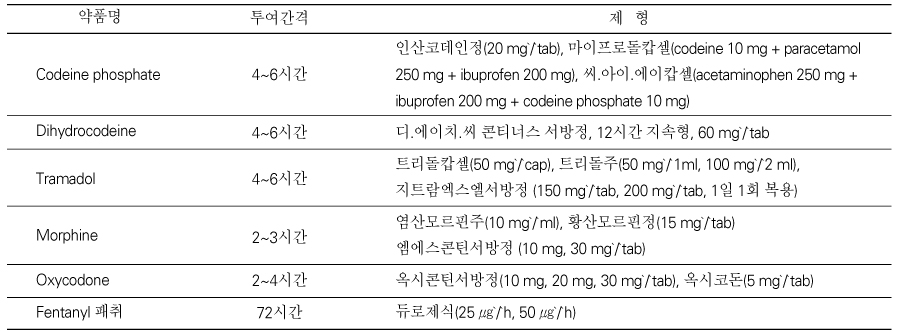 |
 |
- Search
| J Korean Med Assoc > Volume 47(3); 2004 > Article |
Abstract
Flexibility is important in managing cancer pain. As patients vary in diagnosis, stage of disease, responses to pain and treatments, and personal likes and dislikes, management of cancer pain must be individualized. Patients, their families, and their health care providers must work together closely to manage a patient's pain effectively. The World Health Organization (WHO) developed a 3-step approach for pain management based on the severity of the pain : ① For mild to moderate pain, the doctor may prescribe a Step 1 pain medication such as aspirin, acetaminophen, or a nonsteroidal anti-inflammatory drug (NSAID). ② When pain lasts or increases, the doctor may change the prescription to a Step 2 or Step 3 pain medication. Most patients with cancer-related pain will need a Step 2 or Step 3 medication. The doctor may skip Step 1 medications if the patient initially has moderate to severe pain. ③ The patient should take doses regularly, "by mouth, by the clock" (at scheduled times), to maintain a constant level of the drug in the body ; this will help prevent recurrence of pain. If the patient is unable to swallow, the drugs are given by other routes (for example, by infusion or injection).
- TOOLS
-
METRICS

-
- 1 Crossref
- Scopus
- 1,140 View
- 4 Download
-
Related articles in
J Korean Med Assoc -
Pharmacological treatment of Ménière disease2023 October;66(10)
Diagnosis and pharmacological management of allergic conjunctivitis2023 September;66(9)
Pharmacologic treatment of tinnitus2022 December;65(12)
Management of patients with neuropathic pain2022 August;65(8)




